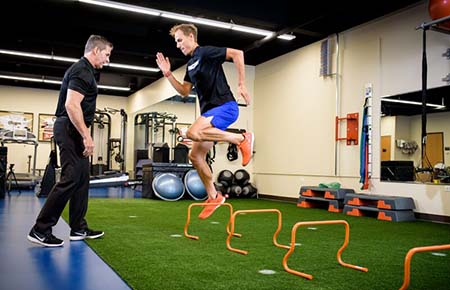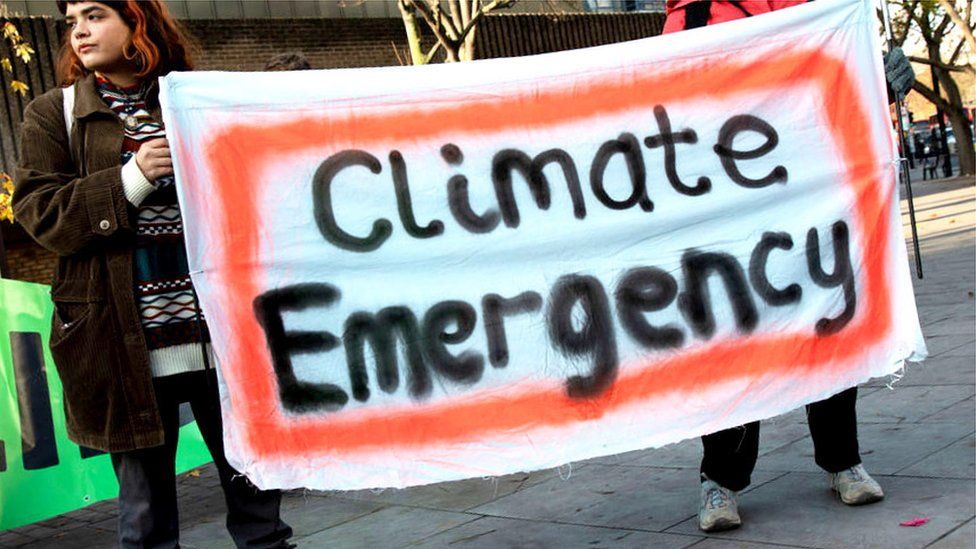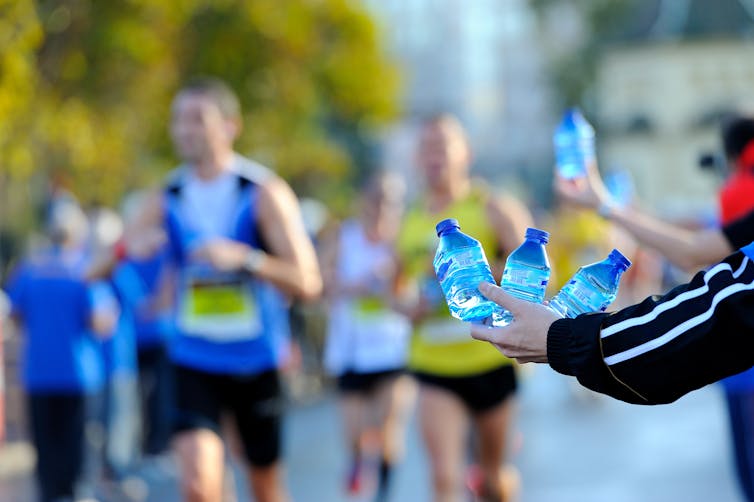Understanding Climate’s Role in Athletic Performance
Climate significantly influences athletic performance, making it essential to consider when planning training programs. Factors such as temperature, humidity, and air quality can impact an athlete’s endurance, strength, and overall well-being. By understanding these elements, athletes and trainers can create tailored training plans that maximize performance while minimizing potential risks.
Temperature, for instance, plays a crucial role in athletic training. Training in extreme heat can lead to dehydration, heat exhaustion, and reduced endurance. Conversely, cold temperatures can cause hypothermia, frostbite, and increased injury risk due to reduced flexibility. Balancing training in various temperature ranges is vital to ensure optimal performance and safety.
Humidity, another essential factor, affects the body’s ability to cool down during exercise. High humidity levels hinder sweat evaporation, making it difficult for the body to regulate its temperature. This can result in overheating, fatigue, and reduced performance. Strategies for managing humidity-related issues, such as acclimatization and hydration, can help athletes maintain their performance in humid conditions.
Lastly, air quality is a critical yet often overlooked aspect of athletic training. Poor air quality, often due to pollution, can lead to respiratory issues, allergies, and other health concerns. By monitoring air quality and adjusting training schedules accordingly, athletes can minimize the potential health risks associated with air pollution.
In conclusion, climate plays a significant role in athletic training. By understanding the impact of temperature, humidity, and air quality, athletes and trainers can create effective training programs that account for various climate conditions. This not only enhances performance but also ensures the safety and well-being of the athletes involved.

Temperature: Friend or Foe in Athletic Training?
Temperature significantly impacts athletic training, presenting both advantages and disadvantages depending on the range. By understanding these effects, athletes and trainers can adapt their programs to extreme temperatures, maximizing performance and safety.
Training in Warm Temperatures
Warm temperatures, above 70°F (21°C), can enhance flexibility and reduce the risk of injury due to increased muscle elasticity. However, excessive heat can lead to dehydration, heat exhaustion, and reduced endurance. To adapt to warm temperatures, consider incorporating the following strategies:
- Schedule training during cooler parts of the day.
- Stay hydrated by consuming water and electrolyte-rich beverages.
- Wear breathable, light-colored clothing to reflect sunlight and promote air circulation.
- Gradually increase training intensity and duration to allow for acclimatization.
Training in Cold Temperatures
Cold temperatures, below 50°F (10°C), can increase injury risk due to reduced muscle elasticity and decreased reaction time. However, cold weather can also improve endurance and reduce heat-related issues. To adapt to cold temperatures, consider the following:
- Wear layers of clothing to maintain body heat and allow for easy temperature regulation.
- Perform a proper warm-up to increase body temperature and muscle elasticity.
- Monitor for signs of hypothermia and frostbite, such as shivering, numbness, and skin discoloration.
- Gradually increase exposure to cold temperatures to promote acclimatization.
In conclusion, temperature plays a critical role in athletic training. By understanding the benefits and drawbacks of various temperature ranges and implementing appropriate strategies, athletes and trainers can optimize training programs for extreme temperatures. This not only enhances performance but also ensures the safety and well-being of the athletes involved.

Humidity: How Moisture in the Air Affects Athletic Performance
The impact of climate on athletic training extends beyond temperature, encompassing factors such as humidity. High humidity levels present unique physiological challenges, requiring athletes and trainers to implement strategies for managing humidity-related issues during training sessions.
Understanding Humidity
Humidity refers to the amount of water vapor present in the air. Expressed as relative humidity (RH), it indicates the percentage of moisture in the air compared to the maximum amount it can hold at a specific temperature. When RH reaches high levels, typically above 70%, the air is saturated, making it difficult for the body to cool down through perspiration.
Physiological Challenges of High Humidity
High humidity impairs the body’s ability to regulate temperature, as sweat cannot evaporate efficiently. This can lead to increased core body temperature, dehydration, and fatigue, ultimately reducing athletic performance. Moreover, high humidity may exacerbate the effects of heat-related illnesses, such as heat exhaustion and heat stroke.
Strategies for Managing Humidity-Related Issues
To mitigate the impact of high humidity on athletic training, consider the following:
- Schedule training during the cooler parts of the day, when humidity levels are typically lower.
- Stay hydrated by consuming water and electrolyte-rich beverages before, during, and after training sessions.
- Wear moisture-wicking clothing to help evaporate sweat and keep the body cool.
- Utilize cooling techniques, such as ice towels or vests, to lower body temperature.
- Gradually increase exposure to high humidity levels to promote acclimatization.
In conclusion, humidity significantly affects athletic performance by impairing the body’s ability to regulate temperature and maintain hydration. By understanding the challenges associated with high humidity and implementing appropriate strategies, athletes and trainers can minimize its impact on training sessions, ensuring optimal performance and safety.
Air Quality: The Hidden Danger in Athletic Training
The impact of climate on athletic training extends beyond temperature and humidity, encompassing air quality. Poor air quality can pose significant health risks, necessitating careful monitoring and mitigation strategies to ensure the safety and well-being of athletes during training sessions.
Understanding Air Quality
Air quality refers to the level of pollutants and other harmful substances present in the air. These pollutants can originate from various sources, including industrial emissions, vehicle exhaust, wildfires, and even natural processes like pollen production. High levels of air pollution can exacerbate respiratory issues, such as asthma and bronchitis, and may contribute to long-term health problems, such as heart disease and cancer.
The Implications of Poor Air Quality on Athletic Training
Exposure to poor air quality during athletic training can lead to a variety of health concerns, including respiratory irritation, coughing, and difficulty breathing. In severe cases, prolonged exposure to polluted air can result in reduced lung function and increased susceptibility to respiratory infections. Consequently, athletes with preexisting respiratory conditions, such as asthma, may be particularly vulnerable to the effects of poor air quality.
Strategies for Monitoring and Mitigating the Impact of Air Pollution
To minimize the impact of poor air quality on athletic training, consider the following:
- Monitor local air quality indexes (AQI) to assess pollution levels before training sessions. Many weather apps and websites provide real-time AQI data.
- Schedule training during times when air quality is typically better, such as early morning or late evening.
- Relocate training sessions to indoor facilities with air filtration systems when outdoor air quality is poor.
- Wear N95 respirator masks during training sessions in highly polluted areas to reduce inhalation of harmful substances.
- Gradually increase exposure to polluted air during training to allow the body to adapt.
In conclusion, air quality plays a crucial role in athletic training, with poor air quality posing potential health risks to athletes. By understanding the implications of air pollution and implementing appropriate monitoring and mitigation strategies, trainers and athletes can ensure a safe and productive training environment, ultimately maximizing performance and minimizing climate-related challenges.

Adapting Training Programs to Climate Conditions
The impact of climate on athletic training extends beyond the immediate effects of temperature, humidity, and air quality. Climate conditions significantly influence the design and execution of effective training programs, necessitating careful consideration and adaptation to ensure optimal performance and minimize climate-related challenges.
The Importance of Climate-Specific Training Modifications
Adapting training programs to various climate conditions is essential for maximizing performance and reducing the risk of injury or illness. For instance, athletes training in cold environments may require longer warm-up periods and additional layers of clothing to maintain body temperature and prevent hypothermia. Conversely, athletes training in hot and humid environments may need to incorporate more frequent rest breaks, hydration stations, and cooling techniques to mitigate the risk of heat-related illnesses.
Examples of Climate-Specific Training Modifications
Consider the following examples of climate-specific training modifications:
- Cold Climates: Focus on dynamic stretches during warm-ups, incorporate high-intensity interval training to elevate core temperature, and utilize climate-controlled facilities when possible.
- Temperate Climates: Implement a balanced mix of aerobic and anaerobic exercises, vary training intensity to accommodate fluctuating weather conditions, and emphasize proper hydration and nutrition.
- Tropical Climates: Schedule training sessions during cooler parts of the day, prioritize heat acclimatization through gradual exposure to high temperatures, and utilize cooling techniques such as ice baths and misting fans.
The Benefits of Adapting Training Programs to Climate Conditions
Adapting training programs to climate conditions offers several benefits, including:
- Enhanced performance due to improved physiological adaptations to specific climate conditions.
- Reduced risk of climate-related injuries and illnesses, such as hypothermia, heat exhaustion, and dehydration.
- Increased motivation and engagement through climate-specific training variations and challenges.
In conclusion, adapting athletic training programs to various climate conditions is crucial for maximizing performance and minimizing climate-related challenges. By understanding the unique advantages and challenges of different climate zones and implementing climate-specific training modifications, trainers and athletes can optimize their training programs and ensure a safe, productive, and engaging training environment.

How to Train Effectively in Various Climate Zones
The impact of climate on athletic training extends beyond the confines of a gym or training facility, encompassing a wide range of environmental factors that can significantly influence an athlete’s performance and overall well-being. By understanding the unique advantages and challenges of different climate zones, athletes and trainers can develop effective strategies for optimizing their training programs and achieving their performance goals.
Cold Climates: Embracing the Chill
Cold climates present a unique set of challenges for athletes, including reduced muscle elasticity, increased risk of injury, and decreased endurance. However, with proper preparation and adaptive strategies, athletes can leverage the benefits of cold environments, such as increased fat burning and improved mental resilience. To train effectively in cold climates, consider the following recommendations:
- Dress appropriately in layers to maintain body temperature and wick away moisture.
- Incorporate dynamic stretches and warm-up exercises to prepare muscles for cold weather training.
- Gradually increase training intensity and duration to allow for proper acclimatization.
Temperate Climates: Balancing Act
Temperate climates offer a moderate environment for athletic training, with temperatures typically ranging between 50°F (10°C) and 70°F (21°C). This climate zone provides a balanced setting for various training activities, allowing athletes to engage in aerobic and anaerobic exercises without the extreme challenges posed by cold or hot environments. To maximize performance in temperate climates, consider the following:
- Maintain a well-rounded training program, incorporating a mix of cardiovascular, strength, and flexibility exercises.
- Monitor weather conditions and adjust training schedules accordingly to avoid heat exhaustion or hypothermia.
- Stay hydrated and maintain proper nutrition to support optimal performance.
Tropical Climates: Coping with the Heat
Tropical climates present a challenging environment for athletes, with high temperatures and humidity levels that can lead to dehydration, fatigue, and decreased performance. To train effectively in these conditions, consider the following:
- Schedule training sessions during the cooler parts of the day, such as early morning or late evening.
- Prioritize heat acclimatization through gradual exposure to high temperatures.
- Utilize cooling techniques, such as ice baths, misting fans, and cold towels, to maintain core body temperature.
In conclusion, training in various climate zones requires careful consideration and adaptive strategies to optimize performance and minimize climate-related challenges. By understanding the unique advantages and challenges of cold, temperate, and tropical environments, athletes and trainers can develop effective training programs tailored to their specific climate conditions. This approach not only enhances performance but also promotes long-term health and well-being for athletes in any climate zone.

Incorporating Weather Forecasts into Training Schedules
The impact of climate on athletic training extends beyond the immediate environment, influencing the planning and execution of effective training programs. By incorporating weather forecasts into training schedules, athletes and trainers can optimize their workouts, maximize performance, and minimize climate-related challenges. This approach emphasizes flexibility and adaptability in training plans, allowing for informed decisions based on short-term weather predictions.
Staying Ahead of the Weather: Proactive Planning
Proactively monitoring weather forecasts enables athletes and trainers to make informed decisions about training locations, times, and activities. For instance, if high temperatures and humidity are predicted, adjusting the training schedule to accommodate early morning or late evening sessions can help mitigate the impact of extreme heat. Similarly, if cold temperatures and precipitation are expected, rescheduling outdoor activities for an indoor facility or postponing the session may be necessary to ensure safety and optimal performance.
Adapting Training Programs: Flexibility is Key
Weather forecasts can also inform the structure and focus of training sessions. For example, if high winds are predicted, incorporating drills that emphasize balance, stability, and core strength can help athletes develop resilience and adaptability in challenging conditions. Similarly, if rain is expected, focusing on agility and footwork exercises can help athletes improve their technique and confidence in slippery environments. By adapting training programs to the forecasted weather, athletes can enhance their overall performance and better prepare for real-world competition scenarios.
Monitoring Air Quality: A Hidden Danger
In addition to temperature and precipitation, weather forecasts can provide valuable information about air quality, which is a critical factor in athletic training. Poor air quality, often caused by pollution, can lead to respiratory issues, allergies, and other health risks. By monitoring air quality forecasts, athletes and trainers can adjust training schedules and locations accordingly, prioritizing indoor facilities or alternative activities when necessary. This proactive approach not only minimizes health risks but also ensures that athletes can perform at their best, unencumbered by environmental factors.
In conclusion, incorporating weather forecasts into training schedules is a valuable strategy for optimizing athletic performance and minimizing climate-related challenges. By staying informed about temperature, precipitation, and air quality, athletes and trainers can make informed decisions about training programs, locations, and activities. This flexible and adaptive approach not only promotes safety and well-being but also fosters resilience and adaptability, essential qualities for success in any athletic endeavor.
Maximizing Performance in Climate-Controlled Environments
The impact of climate on athletic training extends beyond outdoor conditions, as climate-controlled environments offer a valuable alternative for optimizing performance and minimizing climate-related challenges. By utilizing technology to create optimal training conditions, athletes and trainers can enhance performance, adaptability, and resilience, regardless of external weather factors.
The Role of Technology in Climate Control
Climate-controlled environments, such as indoor sports facilities, are made possible through advanced heating, ventilation, and air conditioning (HVAC) systems, which regulate temperature, humidity, and air quality. By maintaining consistent and ideal conditions, these systems enable athletes to focus on their training without the distractions or limitations imposed by external climate factors.
Benefits of Climate-Controlled Training
Training in climate-controlled environments offers several advantages, including:
- Consistent Conditions: By maintaining a stable climate, athletes can rely on consistent training conditions, allowing them to better monitor progress and fine-tune their performance.
- Adaptability: Climate-controlled environments enable athletes to train in various climate scenarios, such as extreme heat or cold, helping them develop resilience and adaptability for real-world competition.
- Injury Prevention: Regulating temperature and humidity can help prevent heat-related injuries and illnesses, while maintaining optimal air quality reduces the risk of respiratory issues and allergies.
- Year-Round Training: Climate-controlled facilities allow athletes to train consistently throughout the year, regardless of seasonal weather changes or unpredictable outdoor conditions.
Tips for Utilizing Climate-Controlled Facilities
To maximize the benefits of climate-controlled environments, consider the following tips:
- Gradual Acclimatization: When transitioning from outdoor to indoor training, or vice versa, allow time for athletes to acclimatize to the new conditions, adjusting their clothing, hydration, and pacing as needed.
- Monitor Performance Metrics: Regularly track and analyze performance metrics, such as heart rate, speed, and power output, to assess progress and identify areas for improvement.
- Incorporate Realistic Scenarios: Design training programs that simulate real-world competition scenarios, including various climate conditions, to help athletes develop adaptability and resilience.
- Collaborate with Facility Managers: Communicate with climate-controlled facility managers to ensure optimal settings for specific training activities and to address any concerns related to temperature, humidity, or air quality.
In conclusion, climate-controlled environments offer a valuable solution for maximizing athletic performance and minimizing climate-related challenges. By utilizing technology to create optimal training conditions, athletes and trainers can enhance adaptability, resilience, and overall performance, regardless of external weather factors. By incorporating climate-controlled facilities into their training programs, athletes can unlock their full potential and maintain a competitive edge in their sport.


